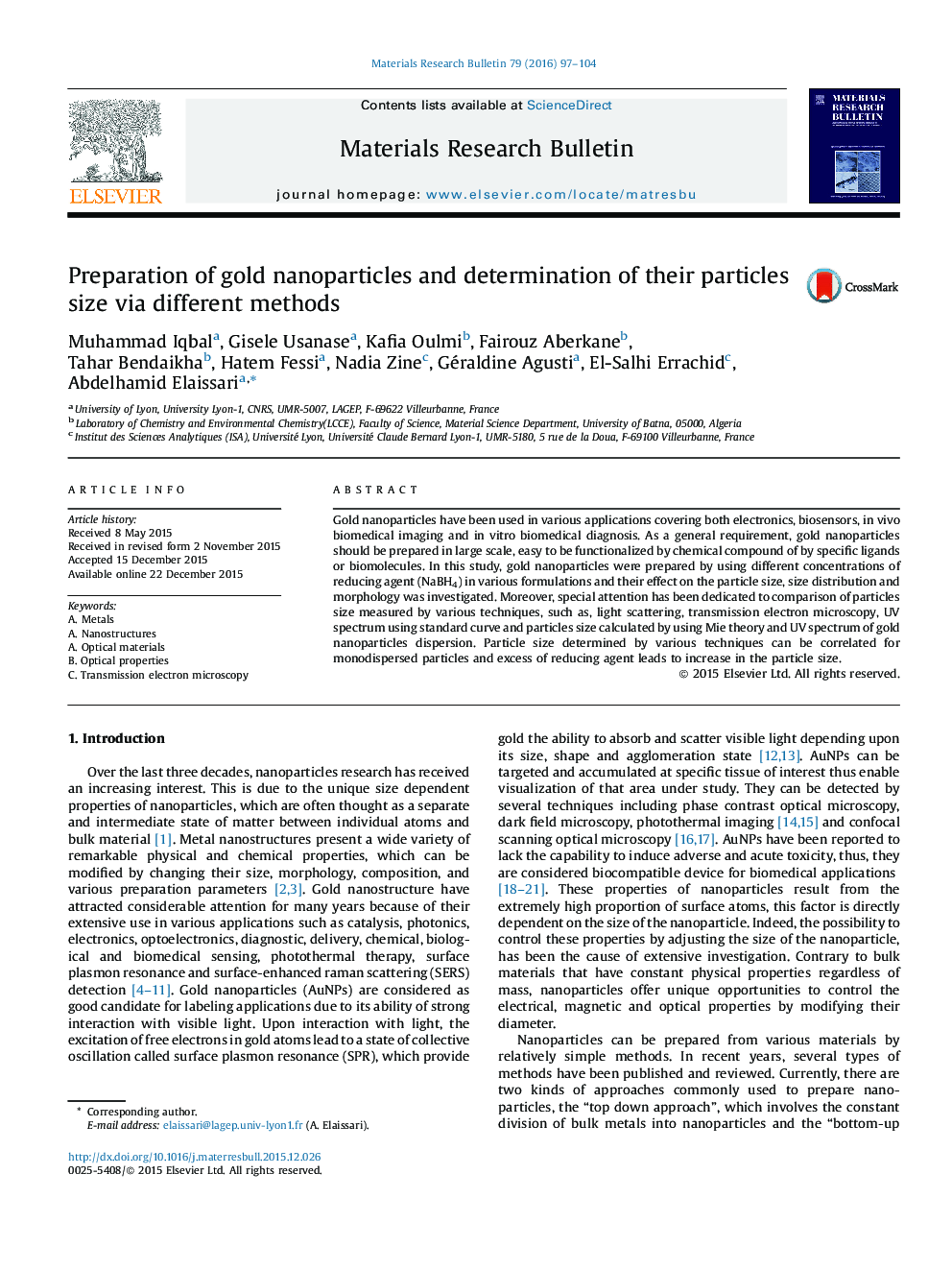| Article ID | Journal | Published Year | Pages | File Type |
|---|---|---|---|---|
| 1487101 | Materials Research Bulletin | 2016 | 8 Pages |
•Gold nanoparticles were synthesized by NaBH4 reduction method.•Excess of reducing agent leads to tendency of aggregation.•The particle size, size distribution and morphology were investigated.•Particle size was determined both experimentally as well as theoretically.
Gold nanoparticles have been used in various applications covering both electronics, biosensors, in vivo biomedical imaging and in vitro biomedical diagnosis. As a general requirement, gold nanoparticles should be prepared in large scale, easy to be functionalized by chemical compound of by specific ligands or biomolecules. In this study, gold nanoparticles were prepared by using different concentrations of reducing agent (NaBH4) in various formulations and their effect on the particle size, size distribution and morphology was investigated. Moreover, special attention has been dedicated to comparison of particles size measured by various techniques, such as, light scattering, transmission electron microscopy, UV spectrum using standard curve and particles size calculated by using Mie theory and UV spectrum of gold nanoparticles dispersion. Particle size determined by various techniques can be correlated for monodispersed particles and excess of reducing agent leads to increase in the particle size.
Graphical abstractPreparation of gold nanoparticles via NaBH4 reduction method, and determination of their particle size, size distribution and morphology by using different techniques.Figure optionsDownload full-size imageDownload as PowerPoint slide
